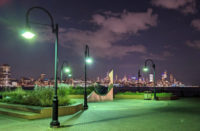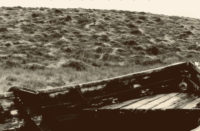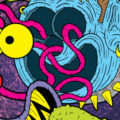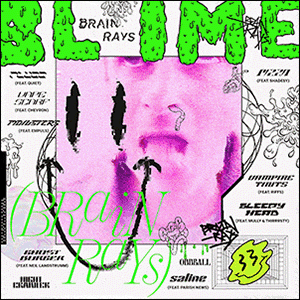Selected and sequenced but unmixed, these recordings mediate direct experience, the most profound of which may be the endless nine minutes of wind tearing through the dead, limbless forest of Treblinka.
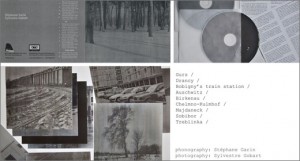
[Release page] One of the many things that made Claude Lanzmann’s nine-hour “Shoah” (1985), so memorable was the fact that for the first time in a documentary about the Holocaust, no historical footage was used to illustrate the gruesome tale. Instead, Lanzmann talked to victims, bystanders and perpetrators in their homes, places of business, or returned with them to the killing grounds in the present day. This simple method served to remove the historical barrier between today and the black-and-white, nearly incomprehensible then.
Stéphane Garin and Sylvestre Gobart have made sound recordings from the places of confinement, deportation and extermination in France and Poland as they are today. Garin has worked with musicians as diverse as Mortiz von Oswald and Opéra du Rouen and scored the animated film “Persepolis.” Photographer Sylvestre Gobart has shown his work in Spain, France, Senegal, the US, Argentina and Guatemala. Since 2005, the duo have been plumbing the memory of extermination. As they explain, they are attempting to do what Lanzmann did but with indirect historical recounting: “Our artistic move aims to break off with the iconography which conditions our collective memory as much by the medium as by the contents of the pictures and the sound. What matters here is to attempt to recover and to reinvest that memory. The distance that separates us from the past tragedies increases the risk of a ritualization or a ‘monumentalization’ of the memory, and that is the reason why we need, through art, to feed the visual memory of extermination.”
We hear cars travelling past the interment camp in Gurs. We hear schoolchildren in Drancy. We hear visitors being guided through the men’s showers and gas chamber at Majdanek. A lone crow perched and peeved on Crematorium I at Auschwitz. Water leaking onto the floor of an abandoned Krupp arms factory. Maintenance work being performed in Block 11. A ridiculous cabaret version of “Kalinka” being piped out of some shop en route to the graveyard of Majdanek. A bonfire outside Crematorium 5 in Birkenau. Weather, commuter trains, backhoes. People chattering, sharing thoughts, pleasantries and banalities with each other in French, English, Polish, Hebrew. The longest piece is the fifteen-minute ´Chelmno-Kumholz: Jewish Place of Pilgrimage,´ a mix of sorrowful folk and cantorial songs, where the first gassings, using vans pumping their own exhaust fumes into the lungs of their human cargo, were undertaken.
We hear, in other words, life going on. A series of dreary, streaked photographs taken when the recordings were made accompanies the discs and enhances the experience. They too are bland in subject matter—a parking lot, roadway signs, but predominantly pathetic, thin stands of trees—and as such, speak volumes about the nothing that is left to see.
The project bears dignified witness. Selected and sequenced but unmixed, these recordings mediate direct experience, the most profound of which may be the endless nine minutes of wind tearing through the dead, limbless forest of Treblinka.
Gurs. Drancy. Gare de Bobigny. Auschwitz. Birkenau. Chelmno-Kulmhof. Majdanek. Sobibor. Treblinka is available on Bruit Clair/Gruenrekorder. [Release page]






